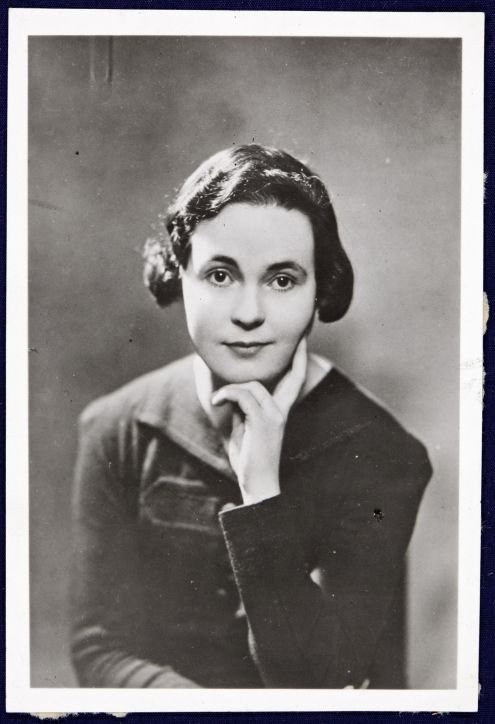Edith Pargeter
|
|
| (© Courtesy of Shropshire Archives) |
Edith Pargeter, who wrote under the pseudonym Ellis Peters, was a prolific author who acquired national and international recognition within her lifetime. Most famous of her literary creations was the medieval monk and detective, Brother Cadfael.
Born in Horsehay in Dawley parish, Edith Pargeter’s upbringing was working class, her home life sympathetic and encouraging. She described her mother as ‘artistic, musical, interested in everything’, qualities which exerted a great influence on her daughter. From an early age she was writing stories and winning prizes.
Edith Pargeter attended Dawley Church of England School from where, later, she won a ‘free place’ to Coalbrookdale High School for Girls. It was here that her lifelong passion for writing took root. After leaving school, she worked at Bemrose Chemist’s in Dawley as an assistant and dispenser. It was an enjoyable period, when she learnt much about medicines (knowledge later used in her stories), and saw her writing career begin to take off with publication of her first books.
In 1940 Edith Pargeter joined the Women’s Royal Navel Service. During her time she rose to Petty Officer, and was also awarded the British Empire Medal in 1944, before returning home to Shropshire in 1945.
In the ensuing years she became actively involved in the Dawley Branch of the Workers’ Educational Association and helped establish the Shropshire Education College at Attingham Park. She visited and subsequently established close ties with Czechoslovakia, a relationship which began out of interest in, and sympathy for a war-torn country, and grew into one of love and admiration for its people, their culture and language.
In 1977 Edith Pargeter published the first of her ‘Cadfael’ stories which proved hugely popular, including successful radio and television adaptations. During her lifetime she wrote some 70 books in all. She won many awards at home and abroad, culminating a year before she died in her OBE, a remarkable accolade for a woman from working class origins. In Shrewsbury Abbey, part of a stained glass window to St Benedict includes an open book with quill pen and the inscription ‘Cadfael’ who himself lived at the abbey and showed many of the deeply sensitive and perceptive qualities of his creator. It is a simple and fitting memorial to a fine writer.


